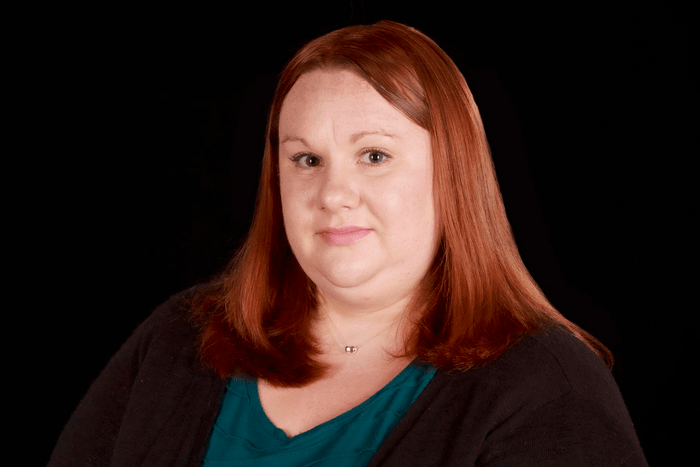East Hanover, NJ. November 18, 2022. A survey of community-living people with spinal cord injury revealed healthcare utilization below the recommended rates for four types of care: primary care, spinal cord injury, dental, and optical. Researchers also found disparities associated with demographic, socioeconomic, and injury-related characteristics. The article, “Medical, dental, and optical care utilization among community-living people with spinal cord injury in the United States,” (doi: 10.1080/10790268.2022.2110817) was published online by the Journal of Spinal Cord Medicine on August 22, 2022.
The authors are Lauren F. Murphy, Thomas N. Bryce, Jennifer Coker, Michael Scott, Mary Joan Roach, Lynn Worobey, and Amanda Botticello. The team collaborated on a secondary analysis of survey data collected by Spinal Cord Injury Model Systems (SCIMS) in California, Colorado, New Jersey, New York, Ohio, and Pennsylvania. SCIMS centers are federally funded through the National Institute on Disability, Independent Living, and Rehabilitation Research, Administration for Community Living, US Department of Health and Human Services.
A total of 690 participants completed the survey, answering questions about their use of routine services from primary care, spinal cord injury, dental, and optical providers over the prior 12 months. Injury-related variables included injury level and injury type, time since injury, and wheelchair/scooter use. Demographic factors included age, sex, race/ethnicity, education, and household income. Health-related variables included self-reports of health insurance, secondary complications, and chronic conditions over the past 12 months.
While the survey revealed relatively high rates of healthcare utilization, dental and optical care were accessed at rates below those reported in the general population, and there were some socioeconomic disparities across groups, according to lead author Lauren Murphy, PhD, of Kessler Foundation. Dr. Murphy explained, “This finding may suggest unmet needs among people with spinal cord injury, and the need to look at barriers to care, including inadequate finances or insurance coverage, as well as lack of trained providers and accessibility issues.”
While people with spinal cord injury saw primary care providers at about the same rate reported in the general population – 84% – because of their potential for complications, more frequent primary care visits may be warranted. “More than half of participants saw a specialist in spinal cord injury care in the past year,” added Dr. Murphy. “This group was more likely to be injured less than five years and have post-secondary education. Seeing a specialist trained in the management of chronic spinal cord injury can potentially maximize opportunities for independent living, so it is important to look at how people choose the type of provider they see for routine care.”
The study provides a useful perspective on how people with spinal cord injury meet their healthcare needs. “Information on healthcare utilization for this population is limited,” said co-author Amanda Botticello, PhD, MPH, of Kessler Foundation, “especially for ancillary services like dental and optical care. Increasing our understanding of healthcare utilization is an important first step toward research that focuses on closing the gaps in care. Reducing barriers will lead to better care for chronic conditions, a prevention of secondary medical complications, and better outcomes for this population.”
Funding sources: Craig H. Neilsen Foundation [#639798]; National Institute on Disability, Independent Living, and Rehabilitation Research under the Northern New Jersey Spinal Cord Injury System [#90SI5026-01-00].
About Kessler Foundation: Kessler Foundation, a major nonprofit organization in the field of disability, is a global leader in rehabilitation research that seeks to improve cognition, mobility, and long-term outcomes, including employment, for people with neurological disabilities caused by diseases and injuries of the brain and spinal cord. Kessler Foundation leads the nation in funding innovative programs that expand opportunities for employment for people with disabilities. For more information, visit KesslerFoundation.org.
For more information, or to interview an expert, contact Carolann Murphy, CMurphy@KesslerFoundation.org.
Images/Captions:
Lauren Murphy, PhD
Dr. Murphy is associate research scientist in the Centers for Spinal Cord Injury Research and Outcomes & Assessment Research at Kessler Foundation.
Amanda Botticello, PhD, MPH
Dr. Botticello is assistant director of the Centers for Spinal Cord Injury Research and Outcomes & Assessment Research at Kessler Foundation and an investigator for the Northern New Jersey Spinal Cord Injury Model System.
Journal
Journal of Spinal Cord Medicine
DOI
10.1080/10790268.2022.2110817
Method of Research
Survey
Subject of Research
People
Article Title
Medical, dental, and optical care utilization among community-living people with spinal cord injury in the United States
Article Publication Date
22-Aug-2022
COI Statement
none
















